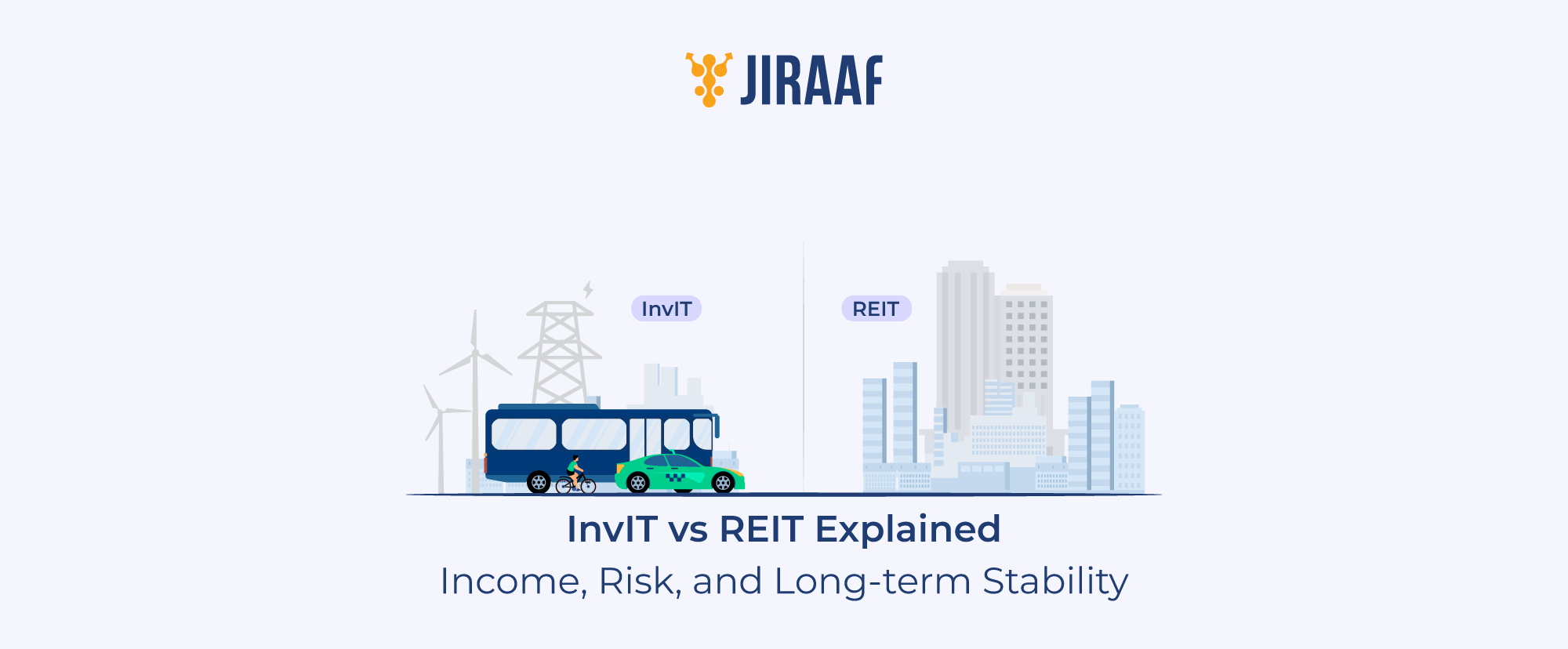Whether you’re an avid investor or just dipping your toes into the world of finance, you must have come across mutual funds. They’re the household name in investing, i.e., pooling money from individuals, diversifying across asset classes like equities, and managed by professional fund houses. For most people, mutual funds are the go-to, simple, and reliable way to grow wealth.
But step a little further, and you’ll find another world a little less familiar, more exclusive, and far more dynamic: hedge funds.
Hedge funds operate where high risk meets high reward. Unlike mutual funds, they aren’t designed for the average retail investor. Instead, they cater to high-net-worth individuals and institutions, using complex and often aggressive strategies to chase outsized returns.
They come with their own quirks, like higher management fees, limited transparency, and private placement structures. They aren’t for everyone. Yet, their allure and mystery make them one of the most talked-about investment vehicles in global finance.
So, how do hedge funds exactly operate, and what makes them so unique? Let’s explore this complex investment terrain in greater detail.
What Is a Hedge Fund and How Does It Work?
By definition, a hedge fund is a private investment pool that raises funds from investors and allocates it among several strategies to optimize returns. If you’ve ever wondered what a hedge fund is or what it means, consider it a premium investment vehicle where expert fund managers have significantly more control than they would in a standard fund.
Unlike mutual funds, which are retail-friendly and tightly regulated, hedge funds operate in a more flexible and less transparent environment. This flexibility allows them to explore unconventional strategies—whether that’s betting on rising and falling stocks (long-short equity), capitalizing on price gaps (arbitrage), or making bold global macro bets on currencies and commodities.
It was initially designed to “hedge” risks while chasing higher returns. Over time, however, hedge funds evolved into aggressive, high-reward investment platforms meant for sophisticated investors.
In India, hedge funds fall under SEBI’s Alternative Investment Funds (Category III). This category grants them freedom from disclosing daily Net Asset Values (NAV) or offering easy redemption like mutual funds. Instead, they prioritize agility and innovative strategies over liquidity.
To truly appreciate how they work, it’s worth exploring the various types of hedge funds and the unique strategies they employ.
Types of Hedge Funds Explained
Hedge funds, being highly flexible and less constrained by regulations, provide managers with the freedom to craft diverse investment strategies. This adaptability has led to several distinct types, and new ones may keep evolving with market trends. Here are some of the most common forms you’ll come across:
- Global Macro Hedge Funds: They make bold bets on global economic trends like interest rates, currencies, or commodities.
- Equity hedge funds: They focus on stocks, often employing both long and short positions to capitalize on opportunities.
- Relative Value Hedge Funds: They exploit price mismatches between related securities, aiming for steady gains with lower market risk.
- Activist Hedge Funds: They invest in companies with the intent to influence management decisions and unlock hidden value.
These types highlight just how wide the hedge fund playbook can be. But how do they really stack up against the more familiar mutual funds most of us know? Let’s break down the key differences between the two.
Hedge Funds vs Mutual Funds – Key Differences
| Aspect | Mutual Funds | Hedge Funds |
| Accessibility | Open to retail investors with low entry amounts | Restricted to high-net-worth individuals (HNIs) and institutions |
| Regulation | Heavily regulated by SEBI (India) or SEC (US), with strict disclosure norms | Operate under lighter regulation (e.g., AIF Cat III in India), offering greater flexibility but less transparency |
| Investment Strategy | Generally conservative—focus on long-term growth through equities, debt, or hybrid portfolios | Aggressive—use leverage, derivatives, short selling, and complex strategies to chase higher returns |
| Transparency | Publish daily Net Asset Value (NAV) and portfolio disclosures | No daily NAVs, limited reporting — investors rely more on fund manager updates |
| Liquidity | Highly liquid—investors can redeem units on any business day | Often less liquid with lock-in periods and restrictions on redemptions |
| Risk Profile | Designed for stability and diversification; lower to moderate risk | High-risk, high-reward; potential for outsized gains but also steep losses |
| Fee Structure | Flat expense ratio (typically 1–2% annually) | “2 and 20” model—2% management fee plus 20% of profits |
| Investor Base | Suited for retail investors and first-time market participants | Catered to sophisticated investors who understand complex strategies |
| Performance Dependence | Returns track market performance closely; lower manager discretion | Manager skill and strategy play a decisive role in returns |
| Examples | SBI Mutual Fund, HDFC Mutual Fund, Vanguard, Fidelity | Global: Bridgewater Associates, Renaissance Technologies; India: AIF Category III funds |
These differences set the global stage for hedge funds, but what about closer to home? Let’s examine how hedge funds have evolved in India, their current market landscape, and where the trends are heading.
Hedge Funds in India: Market Overview & Trends
Although hedge funds are not new in India, most individuals are still unaware of them due to their exclusive and private nature. They are classified as AIF Category III under SEBI regulations, which offers them significantly more flexibility than mutual funds. Using leverage, short selling, or derivatives, managers can make risky decisions.
Hedge funds don’t have the same straightforward taxation route as mutual funds. Certain forms of income are passed on to investors and are subject to capital gains or personal slab taxes, while others are taxed directly at the fund level (typically at higher rates). The structure makes sure investors pay taxes in a fair manner while also emphasizing why these funds are designed for seasoned investors.
Big names like ICICI Prudential and Avendus have played key roles in shaping the Indian hedge fund space. ICICI’s Contra Strategy has shown impressive results—around 21–25% annualized returns over 3–5 years in related equity funds. Avendus, on the other hand, built a reputation with its Absolute Return Fund before winding down its hedge fund operations in 2025 after regulatory challenges.
Despite such shifts, the market is growing steadily. In just Q1 2025, net inflows into AIF Category III were close to ₹1,000 crore. Globally, hedge funds are projected to expand at a 4.1% CAGR through 2034. In India, the momentum is being driven by rising HNI allocations, ESG-based strategies, and sharper SEBI oversight. With the economy booming, hedge funds are positioning themselves as a serious tool for wealth creation and preservation.
If this has piqued your curiosity, you might be interested in answering the question – if hedge funds look so exclusive, how can you invest in them in India?
How to Invest in a Hedge Fund in India
Hedge funds in India may sound tempting, but they aren’t as accessible as mutual funds. Here’s what you need to know before stepping in:
- Investor Eligibility: Hedge funds (AIF Category III) are open mainly to high-net-worth individuals (HNIs) and accredited investors. The minimum ticket size is ₹1 crore per fund, making it exclusive to a small pool of investors.
- Access Route: You can invest through SEBI-registered fund managers or asset management companies that run AIFs. These funds are privately placed, so you won’t find them listed on exchanges like mutual funds or REITs.
- Documentation & KYC: Just like other investments, you’ll need to complete KYC. Given the private placement structure, expect detailed agreements outlining risk factors, fees, and redemption rules.
- Lock-in & Liquidity: Hedge funds don’t offer daily liquidity. They often come with lock-in periods (say, 3–5 years) and redemption restrictions, so money invested here should be something you won’t need anytime soon.
- Advisory Guidance: Because of the risks and complexity, SEBI and market experts advise investors to take professional financial advice before stepping in.
In short, hedge funds in India aren’t about quick entries and exits, they’re about patience, strategy, and risk tolerance. Now that we’ve explored how to get in, the next big question is—what are the risks and rewards that come with hedge funds?
Benefits and Risks of Investing in Hedge Funds
Hedge funds sit on the fine line between risk and reward. It offers the thrill of high returns, but with challenges that can test even seasoned investors. Let’s weigh both sides of the coin.
Rewards
- Diversification: Hedge funds tap into equities, debt, derivatives, commodities, and global markets, which are beyond the reach of most traditional funds.
- Higher Return Potential: Aggressive strategies like leverage or long-short positions aim for outsized gains, often beating conventional funds.
- Flexibility in Strategy: Unlike mutual funds, hedge funds aren’t bound by strict rules, allowing managers to adapt quickly to market shifts.
Risks
- High Volatility: Complex strategies and leverage can magnify both profits and losses.
- Liquidity Constraints: Lock-ins and redemption restrictions make it tough to exit early.
- Lack of Transparency: Limited disclosures mean investors may not always know where their money is deployed.
- High Costs: Management fees (2%+) plus performance-linked charges (20% of profits) cut into returns.
- Regulatory Risk: With SEBI tightening rules, sudden changes could impact fund operations.
Who Can Invest in Hedge Funds? Eligibility and Requirements
Entering the realm of hedge funds isn’t as simple as signing up online, the bar is set higher, and rightly so.
Here’s a clear breakdown of who qualifies:
- High-Net-Worth Individuals (HNIs) & Qualified Institutional Buyers (QIBs)
In India, hedge funds operate under Category III AIFs (Alternative Investment Funds) and are tailored for sophisticated investors, typically HNIs and institutional players.
- Minimum Investment Requirement
The entry ticket is steep: at least ₹1 crore per investor, while employees or directors of the fund may be eligible with ₹25 lakh.
- Investor Cap and Structure Rules
These funds are private by design: limited to 1,000 investors per scheme, cannot be publicly offered, and must maintain a minimum fund corpus (e.g., ₹20 crore)
- Accreditation Standards (India-Specific)
Beyond the sizeable ticket, Indian HNIs must often meet financial credentials like net worth or income thresholds, like global “accredited investor” norms, though India doesn’t define it formally like the U.S. does.
- Global Accredited Investor Criteria (for context)
In the U.S., the bar is similarly high: net worth over $1 million (excluding primary residence), or annual income above $200,000 (or $300,000 jointly), classifying investors as accredited.
Hedge funds in India remain an exclusive yet growing space, offering sophisticated strategies, high potential returns, and equally high risks. They’re not built for every investor, but for those who qualify and understand the trade-offs, they can be a powerful addition to a portfolio.









